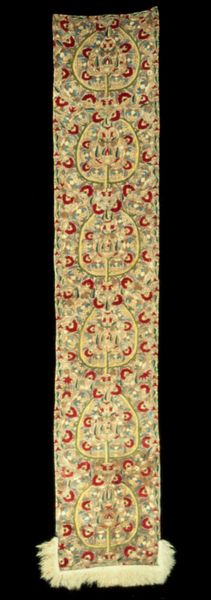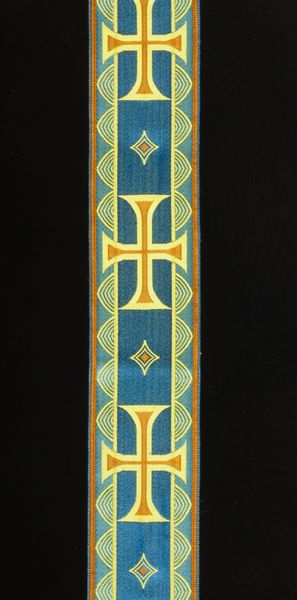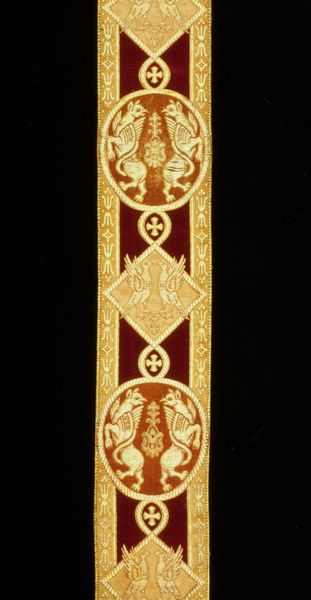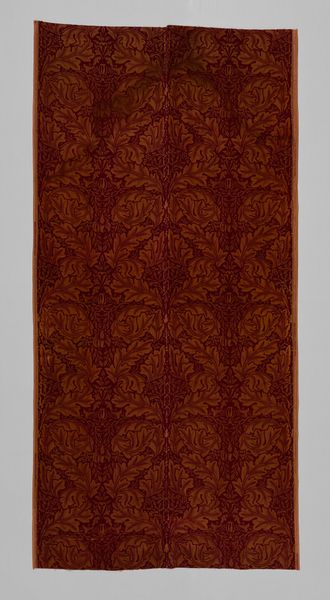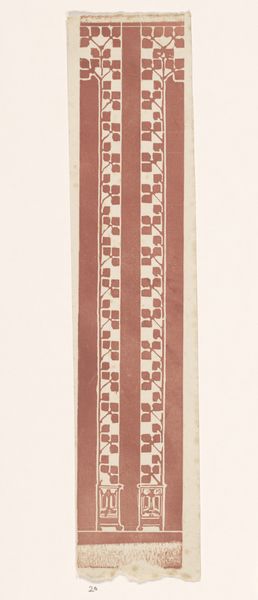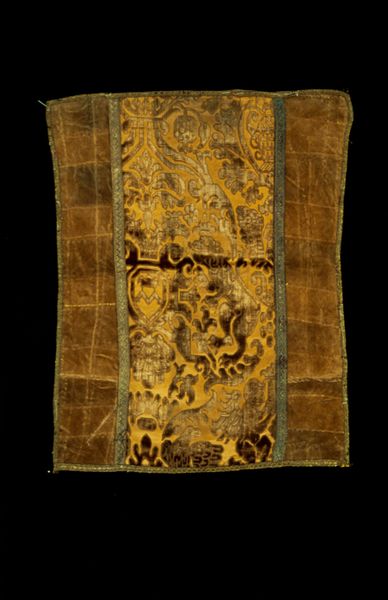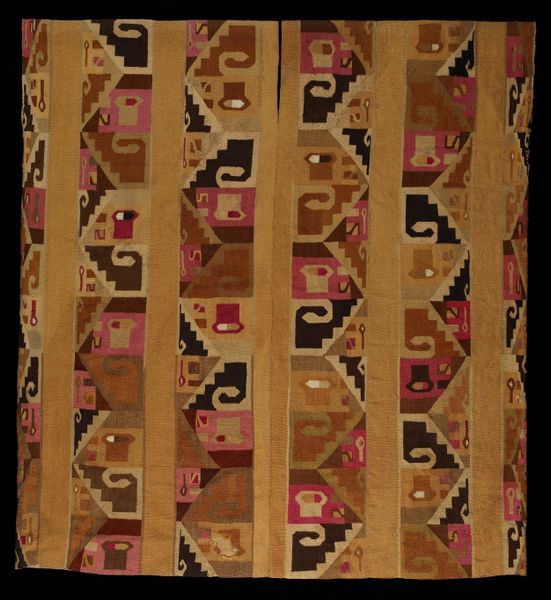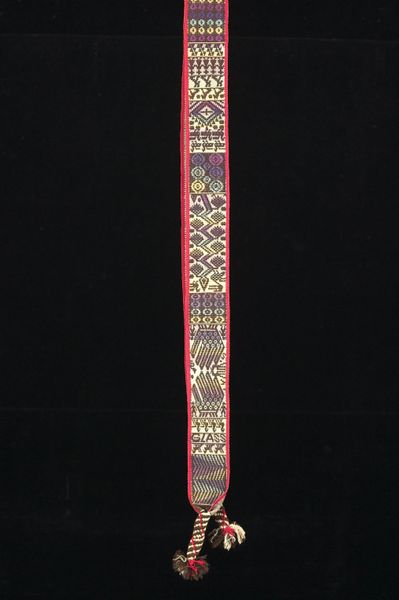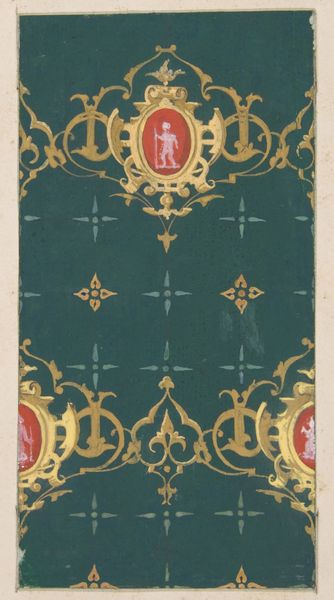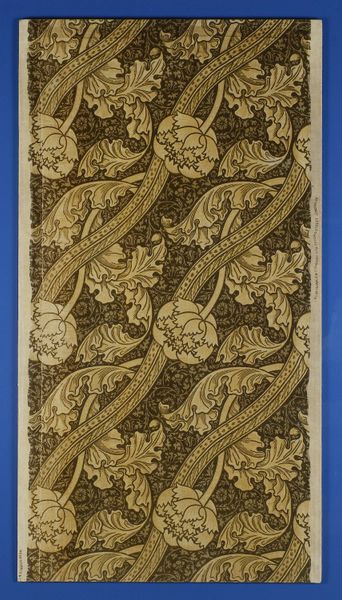
silk, textile
#
silk
#
textile
#
geometric pattern
#
geometric
#
pattern repetition
Dimensions: 19 3/4 x 71 1/2 in. (50.17 x 181.61 cm)
Copyright: Public Domain
This Altar Frontal, of unknown date, and by an anonymous artist, is a stunning display of textile art. The dominant visual experience is one of rich, deep red velvet contrasted with intricate gold embroidery. The shapes are largely geometric, organized in a vertical, rectangular format, divided into sections by horizontal bands of ornamentation. The embroidery’s swirling, organic forms soften this structure. The overall composition is highly structured and symmetrical, with a clear hierarchy in the placement of decorative elements. Within this strict organization, though, is a riot of textural and visual detail. The use of costly materials like velvet and gold thread speaks to the object's original function and its role in a ritual context. Look at the way the golden threads catch the light, creating a shimmering effect. This is not merely decoration; it's a play with surface and depth, inviting the viewer to experience the work not just visually, but also tactilely. This formal quality elevates the work to a level of sophistication and reinforces its symbolic importance.
Comments
minneapolisinstituteofart about 2 years ago
⋮
The European altar frontal, or antependium, is a framed decorative hanging seen by the congregation. It developed from the Eastern church practice of screening the entire altar with curtains. The Catholic Church dispensed with the use of altar frontals after Vatican II in the 1960s. The widespread development of the silk industry in Spain in the late 15th century and early 16th century was encouraged by Ferdinand and Isabella and their successors. The Church was an important patron of silk production and the most sumptuous embroideries were made for its use. The embroidery on this piece is typical of the small patterns introduced in the mid-16th century, with interlaced stems and arabesques combined with small flowers. The center roundel depicts Christ with his chalice instituting the Eucharist. The roundel to the left presents St. Peter with his symbolic key to heaven, and on the right, St. Paul with the sword of his martyrdom.
Join the conversation
Join millions of artists and users on Artera today and experience the ultimate creative platform.
